
The Carcancha and the Apu; rock art in the Death Valley of the Andes
INTRODUCCIÓN
This paper
considers two major issues that have been discussed in much more detail by me in
another publication. This publication, also called ‘The Carcancha and the Apu’ (Van
Hoek 2013), offers the comprehensively described and in-depth conclusions of my
investigations at the impressive rock art site of Alto de Pitis in southern
Peru.
First of all, it
was not me or Paúl Jofrey Álvarez Zeballos who first recorded the petroglyph
boulders at Alto de Pitis in 2009. It also was not Antonio Núñez Jiménez, who -
in 1986 - published an ‘inventory’ of only a small part of the site, and - to
my amazement - it also was not Eloy Linares Málaga who first reported rock art
at Alto de Pitis (or elsewhere in Majes). I think it will be a surprise for
many people to read who actually first recorded
rock art at Alto de Pitis, long before Linares Málaga reported Toro Muerto to
the scientific world in 1951 (Part 1).
Then there is also
an unexpected and controversial author who - in 1970 - reported rock art from
Alto de Pitis. Unfortunately, he - and all other investigators - overlooked an
important graphical content and context of the rock art repertoire at Alto de
Pitis. Also Paúl Jofrey Álvarez Zeballos, who published a very useful and
interesting report on the rock art at Alto de Pitis and La Laja (2009),
overlooked the exclusive graphical content in relation with the geographical
context of the site. Despite the fact that he recorded several key-petroglyphs
at Alto de Pitis, he failed to see (literally and metaphorically as I will
explain) an extremely important ‘connection’ between a specific part of the
imagery at Alto de Pitis and the surrounding landscape. This indisputable
‘connection’ - called ‘The Carcancha and the Apu’ by me - is the major
focus of my survey (Part 2).
PART 1. Alto de Pitis - the True Chronicles
As Alto de Pitis, a major
petroglyph site in the south of Peru, is the key-site in explaining the
connection between ‘The Carcancha and the Apu’, the focus will largely be on this exclusive rock art site.
Although Alto de Pitis has possibly ‘more’ to offer than any other site in the
Majes Valley, most rock art scholars only know of the otherwise very
impressive rock art site of Toro Muerto, which is situated on the west bank of
the River Majes, and undoubtedly many will have visited (only) Toro Muerto.
What many researchers and (fortunately) tourists do not realise is that - when
driving from Arequipa to Majes - one crosses an (in my opinion) even more
impressive site on the east bank of the river Majes, Alto de Pitis, which is
situated directly opposite Toro Muerto.
For matters of convenience I distinguish two study areas. The
first area, is the Greater Study Area,
which is bordered on its south by the Pacific Ocean, on its west by the canyon
of the River Ocoña, on its east by the River Vitór and on the north more or
less by the chain of volcanoes formed by the peaks of Misti, Chachani, Ampato
and Coropuna (Van Hoek 2013: Fig. 1). More or less in the centre of the Greater
Study Area is the focal point of this study: the Core Area, formed by a section of the central part of the Valley of
the River Majes. The Core Area (Van Hoek 2013: Figs 2; 3; 4 and 5) is the very
heart of the Greater Study Area. It takes in a 20 km stretch of the Majes
Valley between Huancarqui and Torán, thus including the major rock art sites of
Toro Muerto, La Laja, Querullpa and, most importantly, Alto de Pitis.
According to Eloy
Linares Málaga (1990: 158-159), the petroglyph site of (Alto de) Pitis was
(first?) reported to him by José Medina in 1951. This is strange because in a
publication as early as 1949 Walter Krickeberg mentioned a number of
petroglyphs sites in Peru, and his list included as well a site called ‘Pitas (Pitis), Cerro Colorado in Majes,
Vitór road, Aplao in the Department of Arequipa’ (Linares Málaga 1978:
379). This description unmistakably concerns Alto de Pitis. However, according
to Linares Málaga (1978: 379) Krickeberg confused Pitas with Pitis, which is not situated on Cerro Colorado
(according to Linares Málaga Cerro Colorado does not exist - however, see my
remarks further down). Linares Málaga continues to explain that ‘near to Sarcas in the same valley of Majes,
there is another place, called Punta Colorado’ (this should read Colorada), ‘where
petroglyphs do exist’. Linares Málaga explains the Krickeberg ‘errors’ by
assuming that Krickeberg was not personally acquainted with these areas.
However, Linares Málaga makes so many (spelling- and location-) errors himself
that I doubt his accuracy and his knowledge of all the areas he described.
Therefore, I am confident that Krickeberg did not refer to the (‘insignificant’)
petroglyphs at Punta Colorada, but indeed to Alto de Pitis. Still, I wonder how
Krickeberg had been informed about the petroglyphs of Pitis, or, as he called
the site, Pitas.
This puzzle is
unravelled by an old photograph in the possession of the National Geographic Society (Picture Id: 602411
or 785801). This very photo notably proves that the well known
explorer Hiram Bingham, the
discoverer of Machu Picchu, recorded rock art at Alto de Pitis as early as 1911, although the ascent to
Nevado Coropuna was the actual goal of his expedition (Bingham 1912, 1922).
Photo 602411 (Figure 1) shows Hiram Bingham standing alongside a very large
petroglyph boulder (labelled AP3-044 by me in 2009) that is nowadays easily
visible with Google Earth. Although one web
site claims that this photo shows Hiram Bingham at Toro Muerto and another web site that it is located
‘near the ruins’ (of Machu Picchu?) ‘petroglifo cerca a las ruinas’, it is
absolutely certain that the photo was taken at Alto de Pitis, in October 1911.
The caption to photo 602411 notably reads: Location: Pitas, Majes Valley, Peru, and, even more convincing, I definitely
recorded the same rock (Figure 2) at Alto de Pitis in 2009; almost one hundred
years after Hiram Bingham.
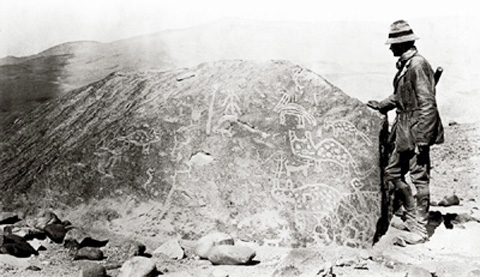 |
Figure 1. Hiram Bingham standing in front of a petroglyph boulder at
Alto
de Pitis, Peru, on 7 October 1911.
Photograph Picture Id: 602411: Hiram
Bingham/National Geographic Stock.
|
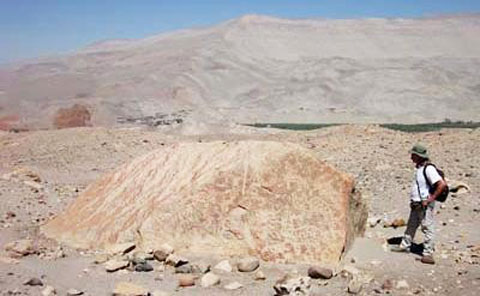 |
Figure 2. The author standing in front of the same petroglyph boulder at
Alto de Pitis,southern Peru.
Photograph by Elles van Hoek.
|
The use of the
name Pitas makes it very likely that,
much later, Walter Krickeberg either visited the same site, or just heard of
(or read about) Hiram Bingham’s accounts of the 1911 Coropuna Expedition
(Bingham 1912, 1922). At the time of Hiram Bingham’s expedition the site was
possibly known as Pitas or perhaps
misunderstood as Pitas. Moreover, the
use of topographical names by local people is often most confusing for
outsiders. For instance, Hiram Bingham wrote: ‘The next day we had a short ride along the western side of the valley
to the town of Aplao, the capital of the province of Castilla, called by its
present inhabitants ‘Majes,’ although on Raimondi's map that name is applied
only to the river and the neighboring desert’ (1912, 1922: 17).
It is undeniable
that Alto de Pitis was recorded by Hiram Bingham as early as 1911, although
even at that time the locals were well aware of the petroglyph rocks of the
area (most likely also of the rock art at Toro Muerto). Thus, despite all
earlier claims, it is certain that neither Walter Krickeberg nor Eloy Linares
Málaga or Paúl Jofrey Álvarez Zeballos were the first people to record rock art
at Alto de Pitis. The very first person to photographically record at least
several petroglyph boulders at Alto de Pitis was Hiram Bingham, on the 7th of October, 1911 (1912, 1922).
Reading Hiram
Bingham’s accounts of the Coropuna Expedition it is almost certain that he did
not know of the existence of those petroglyphs. Interestingly, the records by
Hiram Bingham (1912, 1924) also related of Cerro Colorado as an alternative
name for Pitas. The most relevant part of his account notably reads: At eight o'clock
in the morning, as we were wondering how long it would be before we could get
down to the bottom of the valley and have some breakfast, we discovered, at a
place called Pitas (or Cerro Colorado), a huge volcanic boulder covered with rude
pictographs. Further search in the vicinity revealed about one hundred of these
boulders, each with its quota of crude drawings. I did not notice any ruins of
houses near the rocks. Neither of the Tejada brothers, who had been past here
many times, nor any of the natives of this region appeared to have any idea of
the origin or meaning of this singular collection of pictographic rocks. The
drawings represented jaguars, birds, men, and dachshund-like dogs. They
deserved careful study. Yet not even the interest and excitement of
investigating the ‘rocas
jeroglificos,’ as they are called here, could make us forget that we had
had no food or sleep for a good many hours. So after taking a few pictures we
hastened on and crossed the Majes River on a very shaky temporary bridge. It
was built to last only during the dry season. To construct a bridge which would
withstand floods is not feasible at present. We spent the day at Coriri, a
pleasant little village where it was almost impossible to sleep, on account of
the myriads of gnats. (Bingham 1912, 1922: 16-7; my emphases).
I would like to
emphasise that it is very understandable that Eloy Linares Málaga did not know
of the specific part of the Hiram Bingham expeditions that led to the discovery
of Alto de Pitis. Only a few words appear in the records by Hiram Bingham. In
those days (1953) there was no internet and in general specific information
would be very scarcely available and hard to get hold on. Moreover, after more
than 40 years the publication of Bingham’s accounts at Alto de Pitis may have
been forgotten, or at least overshadowed by his discovery of Machu Picchu. It
is most likely that Eloy Linares Málaga heard of Pitas for the first time when reading Walter Krickeberg’s (1949)
account, or when José Medina informed him in 1951. However, it is strange that
Álvarez Zeballos did not know about the true discoverer of Alto de Pitis, because
it is obvious that (in 2009) Álvarez Zeballos has access to the internet. It
seems that Álvarez Zeballos was not committed to dig deeper in order to find out
about the explorer who first recorded Alto de Pitis.
It is not certain
whether Eloy
Linares Málaga (1990: 162) systematically surveyed Alto de Pitis before 1953,
but a quotation in Núñez Jiménez (1986: 323) tells that Eloy Linares Málaga ‘volví al lugar con el arqueólogo H. D.
Disselhoff en 1953’, which means that he returned to the site that had been
reported to him in 1951. Indeed, the oldest record of the name Alto de Pitis that I could find appears
in a publication by Linares Málaga (1990: 165; but there may exist earlier
publications, that I do not have). In this publication, a photograph shows one
of the most important panels of the area (Figure 3). The caption to that old
photo reads: Petroglifo de Alto de Pitis.
Enero 1957. Foto; Eberhard Schön. In the years that followed, several
researchers, like Hans Dietrich Disselhoff, Hans Horkheimer and Antonio Núñez
Jiménez, visited the site. Unfortunately, from then on confusion was introduced
as the site was being described under several, most puzzling names.
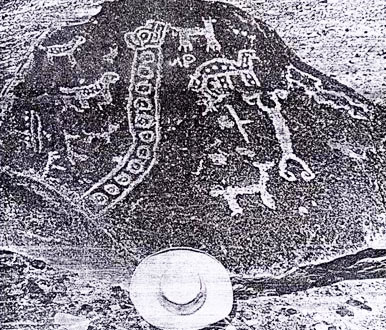 |
Figure 3. Petroglyph boulder at Alto de Pitis, southern Peru. Photograph
by Eberhard Schön, January 1957.
|
Indeed, name-confusion arises as the larger area of Alto de
Pitis includes the sites previously called - and often separately described as
- Pitas and Cerro Colorado (Bingham 1912, 1922); Sarcas (Núñez Jiménez 1986: 311; Linares Málaga 2004: 37), or Sarcas - Hacienda las Palmas (Linares
Málaga 2004: 39; although Hacienda Las Palmas is located on the west side of
the valley) and Pitis (Núñez Jiménez
1986: 323; Linares Málaga 1990; Álvarez Zeballos 2009). But also the following names have been used: Hacienda las Palpas (Linares
Málaga 1978 [typo?]); Alto de Pitis (Linares Málaga 1990: 165), Pitis-Mezana (Linares Málaga 2004: 39), La Mezana and Cantas (Álvarez Zeballos 2009) and Cantas or El Creston (Linares Málaga 2004: 30). To mix up things further, Guffroy (2009:
213) describes the ‘old’ sites of Sarcas and Pitis under one name, ‘Mesana’, while
Hostnig (2003: 55) groups the sites of Pitis-Cantas-La
Mezana under the name ‘Alto de Pitis’, but includes Sarcas in his inventory
as a separate entity (while geologically and archaeologically Sarcas clearly
belongs to the ‘old’ Pitis group). Regarding the name Cerro Colorado, it is interesting to read that the inventory by
Rainer Hostnig (2003: 44) includes an entry by that name, said to be located ‘Frente al sitio Pitis’, stating that he
got that information from Álvarez Zeballos in 2003. I wonder where Álvarez
Zeballos found the name of Cerro Colorado. I hope you are still with me.
Thus, in order to
avoid confusion, I prefer to assign one single name to all rock art sites in
this area and because all boulders are found at a considerable height I have
decided to re-introduce the name Alto de
Pitis, the ‘Heights of Pitis’, also to honour the late Eloy Linares Málaga, who
was probably the first to use this name in a scientific publication.
The most extensive publication of the rock art at Alto de
Pitis appears is the ‘inventory’ by Antonio Núñez Jiménez (1986). However, in
his well-known but - especially regarding the graphic part - most controversial
work (Van Hoek 2011b), Núñez Jiménez describes and illustrates only two very
small parts of the much larger Alto de Pitis complex, but unfortunately he
assigned different names to the two sections he surveyed. The southernmost
section was called Sarcas by him (1986: 311), while the adjacent, northerly
section, only separated by the modern road, was called Pitis (1986: 323). A
problem though is that the records of those ‘two’ sites by Núñez Jiménez are
incomplete and sometimes even completely incorrect (Van Hoek 2011b: 104-109).
There is also a
lot of confusion about which petroglyph boulders are situated where. For
instance, Hans Disselhoff (1968: 38) illustrates a detail of a petroglyph panel
that is found at Alto de Pitis, but his caption to the panel reads: ‘In einem Felsblock von Toro Muerto geritzt’.
This kind of error occurs more often, in various publications.
However, the major
controversies arise from the publications by Núñez Jiménez (1986) and Linares
Málaga (various publications, in which most information and many illustrations
are often uncritically and confusingly repeated). Linares Málaga was the first
to report Toro Muerto to the scientific world as well as many other rock art
sites in the Arequipa area, but despite all his admirable efforts his material
is not always reliable. For instance, the drawing of a petroglyph said to be
located at Toro Muerto by Linares Málaga (1999: 139) is exactly the same as the
drawing by Núñez Jiménez of his Piedra 18 at Pitis (1986: Fig. 2093). In this case it is Núñez Jiménez who states the
correct location of the stone, which is not at Toro Muerto.
The same
controversy applies to two petroglyphs for which Linares Málaga (1999: 145)
claims Toro Muerto to be the location site, whereas Núñez Jiménez includes the
two images as Piedra 20 at Pitis
(1986: Fig. 2099) and Piedra 14 at
Sarcas (1986: Fig. 2049, however with an incorrect caption). The petroglyph
allegedly located at Toro Muerto and called ‘hombre tortuga’ by Linares Málaga (1999: Esq. 56) is actually situated
at Sarcas (Núñez Jiménez 1986: Fig. 2062, not mentioning a Piedra number. However, Fig. 2062 represents another panel of the
boulder described by Núñez Jiménez as Piedra 12, Fig. 2046). Fortunately, Linares Málaga corrects his own mistake in a later
publication (2004: 37).
However, in that
same publication Linares Málaga includes photographs of petroglyph boulders
(Figures 4 and 5) said to be at Sarcas (2004: 32 and 35) that actually are
situated at Pitis, respectively about 490 m and 590 m further north of the
entrance to Sarcas. In another publication Linares Málaga (1990: 449) includes
a drawing of a petroglyph panel with three quadrupeds - again purportedly
located at Toro Muerto - that actually is found at Pitis (Núñez Jiménez 1986:
Fig. 2082). It proves that Linares Málaga has not been that accurate in
distinguishing two important sites that are located only seven kilometres
apart.
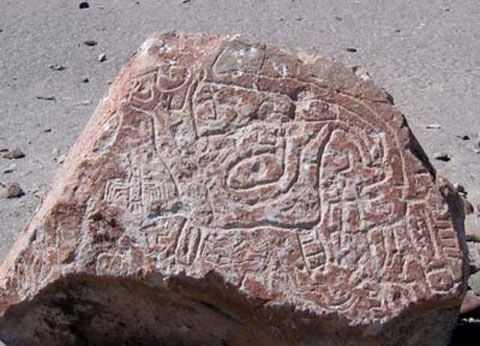 |
Figure 4. Petroglyph boulder at Alto de Pitis, southern Peru. This boulder
was also
photographed by Hans Horkheimer as early as 1968 (Linares Málaga 1990:
162).
Photograph by Maarten van Hoek.
|
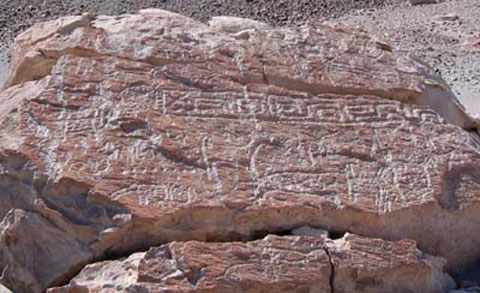 |
Figure 5. Petroglyph boulder at Alto de Pitis, southern Peru. This boulder
was also
photographed by Eloy Linares Málaga as early as 1953 (Linares Málaga
1990: 411).
Photograph by Maarten van Hoek.
|
Rock art researcher Jean Guffroy (2009) published a colourful
(photo)book about the petroglyphs of coastal Peru, which included an extremely
small section of the ‘Mesana’ petroglyph site (which covers only a very small
part of Alto de Pitis). Unfortunately and apparently, at the time of visiting
the area, Guffroy was not aware of the surveys by Álvarez Zeballos (2009), as
he would most certainly have visited the area north of ‘his’ ‘Mesana’,
simultaneously refraining from misleading statements in his book.
Between 2002 and
2012 my wife Elles and I visited Toro Muerto (Van Hoek 2003; 2006; 2010; 2011a;
2011b) and Alto de Pitis (2011a; 2011b; 2012) many times. In total I surveyed
369 petroglyph boulders (584 panels) at Alto de Pitis and, together with the
extra rocks/panels illustrated/described by Núñez Jiménez (1986) and Álvarez
Zeballos (2009) but not seen by me, the total of known petroglyph boulders at
Alto de Pitis is at least 381 (596 panels), most of which have been registered
by me in more than 1500 photographs. As many rocks will have escaped being
noticed by me, and possibly also by Álvarez Zeballos, the overall number of
petroglyph boulders at Alto de Pitis will definitely exceed 400 (resulting in
possibly more than 600 panels).
In 2009 Paúl Jofrey Álvarez Zeballos published an interesting
survey about Alto de Pitis on the internet. His study area covered the much
larger area north of the Sarcas section, but curiously he excluded the zones of
Sarcas and Quebrada de Pitis (2009: Mapa 1). It is this survey by Álvarez Zeballos that to a certain extent revealed the
great importance of the rock art on the east side of the Majes valley, also because he is the first to fully describe the
wonderful petroglyph site of La Laja, located only 17 km north of Alto de
Pitis. Álvarez Zeballos also was the first who - in my opinion most
appropriately - claimed that the whole area, from Torán in the south to Cantas
in the north, actually forms one large, coherent petroglyph field (2009: Introducción).
Yet, I noticed a disturbing statement concerning an
overconfident claim by Álvarez Zeballos (Álvarez Zeballos 2009; see also
Cardona Rosas 2002: 69; Hostnig 2003: 55). It notably seems that Álvarez
Zeballos claims to be the first person to have surveyed Alto de Pitis as he
notably writes (2009: his emphasis): ‘El trabajo que se presenta a continuación corresponde a
los petroglifos que están cerca de los anexos poblados de la Mezana, Pitis y
Cantas, que de acuerdo a nuestra investigación: ‘no existe ningún reporte’. It seems that Álvarez Zeballos thus claims that before his 2009
survey of Alto de Pitis no recordings of the petroglyphs in question were
available. If this is so (but I refuse to accept this), then perhaps Álvarez
Zeballos has also been the very first person who has most deplorably chalked-in
the petroglyphs that he photographed (there are several photographs of
chalked-in petroglyphs in his 2009 survey and during my surveys I noticed
several other sad instances).
Yet, it is certain that Álvarez Zeballos was not the first
person to record and publish rock art found at Alto de Pitis. Obviously, he was
not aware of the discovery of approximately one hundred petroglyph boulders at
Alto de Pitis by Hiram Bingham as early as 1911 (see Figure 1). But after the
discovery of Alto de Pitis by Hiram Bingham, it is certain that Linares Málaga
photographed at least one panel (see Figure 5) and probably many more in
1953, although it had been
incorrectly labelled as ‘Sarcas’ by him (Linares Málaga 2004: 35). A panel only
127 m to the SW of the previous rock (see Figure 4) was photographed by Hans
Horkheimer in 1968 (again stating Sarcas as the incorrect location: Linares
Málaga 2004: 32). Another piece of evidence is a photograph - taken by Eberhard
Schön as early as 1957 - of another panel at Alto de Pitis (Linares Málaga
1990: 165; Álvarez Zeballos 2009: panel P-ps-9).
This boulder (see Figure 3) is situated only 106 m further west of panel
P-ps-1 (which is described in next paragraph) and 1978 m north of the largest
boulder at Sarcas. A photograph of Linares Málaga together with Antonio Núñez
Jiménez standing in front of the largest boulder at Sarcas (Figure 6) was
probably made before 1986.
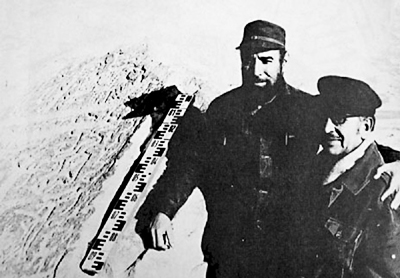 |
Figure 6. Antonio Núñez Jiménez (left) and Eloy Linares Málaga standing in
front of the largest petroglyph boulder at Sarcas (Alto de Pitis), southern
Peru. Photograph by Miguel González.
|
Moreover, Álvarez Zeballos also seems to claim that he has
been the first rock art researcher to report an interesting set of images on a
boulder at Alto de Pitis. The key image in this incorrect claim concerns a set
of three petroglyphs on a panel (labelled
P-ps1 by Álvarez Zeballos, 2009) with two zoomorphs and, especially, an anthropomorph with possible feline
head or mask (Van Hoek 2012: Fig. 84; 2013: Figs 19 and 85). However, in a much
earlier publication Linares Málaga describes an image at Pitis, La Mesana, as:
‘una figura antropomorfa de 0,85 m de
largo por 0,52 m de ancho, se trata de un ‘hombre-jaguar’ que se ha puesto de pie con las
extremidades superiores suspendidas hacia ariba y las inferiors de perfil, el
cuerpo está de frente y el tórax parce sido abierto pues se perciben claramente
las costillas delimitadas por una grabación cuadrada de doble acanaladura’ (1990: 162, my emphases).
Interestingly, this description exactly matches the human-feline figure
described by Álvarez Zeballos (2009: ‘his’ panel P-ps-1). I am certain that
Linares Málaga recorded this petroglyph long before his 1990-publication.
All this evidence clearly proves that several important
petroglyph panels at Alto de Pitis were known and published long before Álvarez
Zeballos started his surveys in the area. Álvarez Zeballos should at least have
acknowledged this and should have credited Eloy Linares Málaga (and all other investigators)
for this.
In conclusion, I claim that several other people recorded
petroglyphs at Alto de Pitis long before Álvarez Zeballos published his otherwise
very useful 2009-survey. Also, the recording of another very important
petroglyph at Alto de Pitis by a remarkable and controversial person in 1970
escaped his attention. This claim needs further explanation.
A most atypical
petroglyph - said to be located at Toro Muerto - has once been illustrated by
Erich Von Däniken as early as 1970 (it is unknown to me whether Von Däniken has
actually visited the Majes Valley, but in view of the mistake regarding its
location, this seems to be very unlikely - it is therefore a puzzle to me how
he got hold of this drawing). It depicts a fully frontally depicted and
outlined anthropomorph with both arms raised (Figure 7). Its rectangular head
has no neck and the figure appears to be smiling. Above a possible belly-button
element is a square groove enclosing six short diagonal grooves that - when
observed together with a central vertical groove - seem to form a rib cage.
It has now been
suggested that this figure shows an open rib cage as if the figure has been
operated upon; for instance to remove the heart. It notably is compared by Von
Däniken with the removal of the heart from an opened rib cage by the ancient
Mayas. At first, especially because of the general controversial ‘Von Däniken’
context and the suggested incredible operation-interpretation made me rather
sceptical about this drawing, especially as Wikipedia reports that Von Däniken put forward photographs of ‘ancient’ stones in Peru
(referring to the so called Ica Stones), with carvings of men using telescopes,
detailed world maps, and advanced medical operations, all beyond (? my
reservation) the knowledge of ancient Peruvians. Yet, this dramatic petroglyph,
to which Von Däniken refers, definitely exists. However, it is not located at
Toro Muerto, but at Alto de Pitis.
|
Figure 7. Drawing of a petroglyph boulder at Alto de Pitis, southern Peru. Drawing by Maarten van Hoek, based on a drawing in: Von Däniken 1970,
incorrectly stating Toro Muerto as the location of this panel.
|
|
Figure 8. Photo of the same petroglyph boulder (see Figure 7) at Alto de
Pitis, southern Peru.
Photograph (digitally enhanced) by Maarten van Hoek.
|
A stone slab at
Alto de Pitis (Figure 8) has some remarkable petroglyphs on its flat, upward
facing surface. Only low sun will more clearly reveal the pattern of the major
petroglyph. Unfortunately a large part of this slab has now severely been
damaged by flaking (natural or anthropic damage?). The pale-coloured slab is
moreover stained by natural discolouring. It is therefore hard to distinguish
the image, also because the figure has patinated to the same degree as the
natural rock surface. Yet, the frontally depicted anthropomorph is clearly
visible as most of it has been made by executing rather deep grooves.
Unfortunately, the right arm and part of the head are missing because of the
flaking of the stone slab and thus it could not be corroborated if indeed also
the missing arm appeared in the raised position. Yet, the outlined square with
the ‘internal ribs and sternum’ is still clearly discernable. The actual
lay-out of the figure only differs in some details from the drawing by Von
Däniken.
Having scanned
this figure and many others and having pondered the graphical content and the geographical
context many times I now claim, and this may sound surprising, that Von Däniken
may even be right in his interpretation of this figure ‘being operated upon’.
This hypothesis will be explained in Part 2.
PART 2. The Death Valley of the Andes
For a specific reason the sub-title of this paper reads ‘The Death
Valley of the Andes’. But why is it justified to label in particular the
Majes Valley as ‘The Death Valley of the Andes’? Almost every
valley in western Peru has testimonies of death-related practices,
death-related iconographies and other remains. Countless, often looted graves
occur in all major Peruvian valleys. Also many temple monuments display
specific death-related iconographies. The best example is the gruesome collection
of severed body parts engraved on the temple walls at Cerro Sechín in northern
Peru. Also the Huaca de la Luna near the city of Trujillo in the Moche Valley
witnessed many executions during the Moche Epoch and, possibly to remind people
of their fate, an impressive row of horrific dragon-like creatures carrying
severed heads still adorn the adobe walls of that ‘Huaca’. Thus, the Casma and Moche valleys could equally be labelled
the Death Valley of the Andes.
Yet, although the Majes Valley has no monumental
architectural testimonies of the past, like Casma and Moche, it may rightfully
be called the Death Valley of the Andes. There are many reasons for this, but
never have all rationales been grouped in one publication in order to
demonstrate that the valley witnessed a long history of death and violence (Van
Hoek 2013, offering many more details). Indeed, today the valley is a peaceful
and quiet place. The evidence for ancient death and violence has literally and
metaphorically been ‘buried’ and, moreover, is often hard to recognise.
Death Related Rock Art
Although
death-related rock art imagery in the Core Area is relatively scarce, the
examples that are present are exceptionally revealing. Besides the many images
of confronting (fighting?) zoomorphs or a few petroglyphs of zoomorphs
disputing a ‘trophy’ head (symbolising the real-world conflicts in the Majes
Valley?) there are several groups of images that clearly are death-related.
First there are quite a few depictions of mummy bundles. Then there are the
relatively many depictions of ‘trophy’ heads. Also the numerous ‘dancer’
figures are, in my opinion, death-related (Van Hoek 2013). The intriguing
practice of obliterating rock art images in prehistoric times (Van Hoek 2006)
is also explained by me as representing a death-related ritual.
Last but definitely not least there
is an almost exclusive group of specifically death-related images that first
and foremost justifies the title ‘the Death Valley of the Andes’. Most
importantly, this group of idiosyncratic petroglyphs forms the key to the
explanation of the title of this paper: ‘The Carcancha and the Apu’, but
those images are also the reason to call the rock art site of Alto de Pitis
‘The Petrified Cemetery’. I have labelled this atypical group of images the
‘skeleton-anthropomorphs’.
The
‘Skeleton-Anthropomorphs’
The most decisive
motif that will prove the term ‘Death Valley of the Andes’ for the Majes Valley
to be more than valid, but also justifies the label ‘The Petrified Cemetery’
for Alto de Pitis, is the ‘skeleton-anthropomorph’; the graphical depiction of
an anthropomorphic figure showing (parts of) its skeleton. Although the ancient
Andean peoples definitely will have known that inside the body of many
zoomorphs there is a hard skeleton that becomes exposed after the soft parts
have decomposed, graphical representations of skeletons in ancient Andean
records are scarce. Perhaps there once was some kind of taboo that forbade
making depictions of human skeletons. Despite this purported taboo, Alto de
Pitis is teeming with images of the ‘skeleton-anthropomorph’. Most intriguing
in this respect is my hypothesis that (most of) these ‘skeleton-anthropomorphs’
actually seem to depict living beings.
At least 28
certain ‘skeleton-anthropomorphs’ and 17 possible (weathered or uncertain)
examples have been reported on 29 boulders at Alto de Pitis, yielding 45
examples in total (and perhaps there is more to discover). These absolute
numbers are in itself astonishing. However, the relative numbers reveal the
supremacy of Alto de Pitis even better: Alto de Pitis has no less than 66% of
all 68 ‘skeleton-anthropomorphs’ in the whole of Peru (north Peru has only 2
examples). Within the Greater Study Area (with 6 sites featuring altogether 61
examples; all described in Van Hoek 2013) the percentage for Alto de Pitis
rises to 75%, and for the Core Area (with 49 examples) it even becomes 94%
(Toro Muerto has ‘only’ four examples). This enormous statistical concentration
of ‘skeleton-anthropomorphs’ the ‘The Petrified Cemetery’ of Alto de Pitis
cannot be without a very special reason.
The ‘Petrified Cemetery’
Surprisingly,
while describing his ‘Mesana’ area (two extremely small parts of Alto de
Pitis), Jean Guffroy (2009: 214) argued that ‘anthropomorphic figures are scarce and reduced to small silhouettes’.
It proves that Guffroy did not inspect every petroglyph panel in the area, and
again it is also clear that he certainly did not survey the northern part of
Alto de Pitis. I do not regard it as a problem that a researcher has not seen
every (petroglyph) rock in an area - I certainly did not see every boulder at
Alto de Pitis - but I generally refute and reject the practice of making
absolute statements based on a (very) incomplete survey, without informing the
reader about this deficiency. It is also clear that Guffroy was not aware of
the surveys by Álvarez Zeballos (2009), who illustrates key-petroglyphs of several
large and complex anthropomorphic figures in this zone.
It now proves that
especially the occurrence of a specific group of anthropomorphic petroglyphs at
Alto de Pitis profoundly contradicts the premature statement by Guffroy.
Notably, only when compared with the number of other figures, such as zoomorphs
and abstract patterns, anthropomorphic figures, indeed occur less frequently at
Alto de Pitis. However, this is no surprise as the relative ‘scarceness’ of
anthropomorphic figures is a characteristic of most (if not all) major
petroglyph sites in the Desert Andes; even at Toro Muerto where hundreds and
hundreds of anthropomorphic petroglyphs occur. Moreover, also when counting the
absolute numbers there are probably many more anthropomorphs in his ‘Mesana’
group than seen by Guffroy. Moreover, there are several panels with more
elaborate and (relatively very) large anthropomorphic figures.
This brings me to
discuss the most fascinating, large anthropomorphic figures at Alto de Pitis;
the ‘skeleton-anthropomorphs’ and related figures (all 68 examples in Peru including
the 45 examples at Alto de Pitis have been fully described and illustrated by
me: see Van Hoek 2013). ‘Skeleton-anthropomorphs’ only comprise figures that
have been depicted fully frontally. There are several other remarkable
properties. First of all the size of most ‘skeleton-anthropomorphs’ is outstanding.
Although also a few small-sized petroglyphs of this type occur, most of the
figures are relatively (very) large and have an average height of about 75 cm.
Often the ‘skeleton-anthropomorph’ has also a specific ‘saluting’ posture,
which in itself is a rather common posture in Andean rock art. But several
examples at Alto de Pitis have the second hand placed specifically at the
abdomen/genital area, which is most unusual (although this specific posture is noticed
in petroglyphs at Culebrillas as well - see Van Hoek 2013: Fig. 99). However,
the most defining feature is the presence of ribs, often combined with a
sternum, while circles or knobs at the joints are another clue indicating that
we are dealing with ‘skeleton-anthropomorphs’, as is also evident at
Culebrillas (Van Hoek 2013: Fig. 99) and Toro Muerto (Van Hoek 2013: Fig. 103).
Another property of several of the ‘skeleton-anthropomorphs’ is the ‘grinning
mouth showing teeth’; a characteristic also evident at several ‘mummy-bundle’ (and
other) petroglyphs of this area.
Most significant,
however, is the explicit presence of genitals in several of the
‘skeleton-anthropomorphs’. Although most ‘skeleton-anthropomorphs’ seem to be
male, a few sexless or even possibly female examples occur. Moreover, two
panels have a ‘couple’ of ‘skeleton-anthropomorphs’. In each case one figure is
clearly male as it has ‘testicles and a phallus’ between the legs, while the
other figure has no sex indicated and therefore might be female (Van Hoek 2013:
Figs 123 and 130). In most cases the male sexual organ is ‘dangling’ downward,
like at the ‘skeleton-anthropomorph’ on Panel AP3-060A (Van Hoek 2013: Fig.
127), but at least in one case - on Panel AP3-039A - it seems to exhibit an
erect penis placed upon the abdomen (Figure 9).
|
Figure 9. Looking south across Alto de Pitis towards the Red Point at Punta
Colorada, Majes, southern Peru.
Inset: one of the ‘skeleton anthropomorphs’ at Alto de Pitis.
Photograph (digitally enhanced) and drawing by Maarten van Hoek.
|
Another
exceptional figure is the ‘saluting’ ‘skeleton-anthropomorph’ on Panel
AP3-052A. It seems to have four (?) ‘eyes’ and an extra (?) ‘grinning mouth’ on
the abdomen. It moreover has its right hand placed across the genital area
which seems to cover the (male?) genitals - indicated by the circle below the
hand. What is most puzzling however, is the ‘severed’ (?) male sexual organ
(‘testicles and a phallus’ - the line ending in a similar circle) that is
‘floating’ between the ‘feet’ (Figure
10). Notice the exceptionally large, outlined feet and hands.
|
Figure 10. One of the ‘skeleton anthropomorphs’ at Alto de Pitis.
Drawing
by Maarten van Hoek.
|
In conclusion,
many ‘skeleton-anthropomorphs’ at Alto de Pitis show a most bizarre combination
of death- and life symbolism, which clearly emphasises the concept of duality
in Andean cosmology. Death and life are combined in one single but most
powerful icon; the ‘skeleton-anthropomorph’. ‘Skeleton-anthropomorphs’ may
therefore well represent the ‘Living Dead’. This duality of the
‘skeleton-anthropomorph’ is one of the most decisive arguments that will
explain ‘The Carcancha and the Apu’ issue.
The Coropuna Connection
But - perhaps surprisingly - in order to
justify the presence of the ‘Petrified Cemetery’ at Alto de Pitis with so many
‘skeleton-anthropomorphs’, I have to focus on the Nevado Coropuna.
The first time my wife Elles and I
saw Nevado Coropuna, the highest volcano in Peru, many years ago, we simply did
not recognise it. For us it was just one of the very few friendly white clouds
that were almost motionlessly hovering over the High Andes. Only when we
noticed that the shape and position of that particular ‘cloud’ did not change
after an hour driving in a taxi on our way from Arequipa to Toro Muerto, we
realised that it must be a high mountain, covered in snow. But even then we did
not realise that it was one the most important ‘Apus’ of the Andes.
The Nevado Coropuna - Coropuna: allegedly meaning the ‘shrine on the plateau’ in Quechua - is
Peru's highest and largest volcano. It is a massive, ice-covered volcanic
complex stretching about 20 km from east to west (Figure 11). The
first recorded ascent of Coropuna is widely credited to Hiram Bingham, the
discoverer of Machu Picchu (Bingham 1912, 1922). It is believed, however, that
the famous American mountain climber Anne Smith Peck actually made the first
ascent on July 16, 1911, three months earlier than Bingham. Yet, it is certain
that ancient Andeans also climbed this sacred mountain long before any American.
|
Figure 11. Aerial view of the Nevado Coropuna looking north.
Photograph by
Maarten van Hoek. |
Nevado Coropuna notably was one of
the major Apus or Sacred Mountains of
the Andes, also long before the Incas arrived in this area. This impressive volcano, towering over the Greater Study Area
and often visible from afar, was definitely the principal Apu for the
local and regional populations, controlling the weather, the water resources
and thus agricultural fertility. People living in the area still make
offerings to the mountain god Coropuna to increase their herds (Reinhard 1999:
29).
When travelling by car across the Pampa de Majes, this impressive volcano
is often clearly visible. However, when travelling north through the deep
canyon of the Majes Valley, Nevado Coropuna is almost always invisible. Almost
always! That the Nevado Coropuna is invisible from the valley floor is quite
understandable as views from the valley floor (in the Core Area at about 400 m
O.D.) are blocked on both sides by steep mountain slopes rising up to 800 m
above the valley floor. Of course I have not checked every point in the Majes
Valley, but throughout the years my researches reached a most revealing
understanding of the situation.
To
explain this understanding, I have to begin expressing my initial surprise when
I started to grasp the enormous difference between Toro Muerto and Alto de
Pitis. Notably, when I first visited Toro Muerto I was not only struck by the
enormous quantity of petroglyph boulders and the impressive array of images,
but also by the limited prospects. Even from the highest point that I visited
at Toro Muerto the visibility of specific landmarks was extremely poor. From
almost every position only a relatively small part of the green and fertile
Majes Valley is visible to the east, while from many angles one or two of the Red
Spots in
the landscape below are also visible. Although the rock art site of Alto de
Pitis is clearly visible across the valley, it does not stand out at all.
Alto de Pitis
How different is the situation at
Alto de Pitis. First of all it is remarkable to notice that from very
many of the petroglyph boulders fine vistas are available, especially to the
south and to the west and NW, because the terrace of the Alto de Pitis complex
with its low hillocks is situated on average 100 m above the extensive, green
valley floor of the river Majes.
What intrigued me
deeply during my surveys in the Core Area were the several contrasting colours
that could be seen at and from Alto de Pitis. Often bright white clouds
contrast sharply with the deep blue skies. Similarly, the colourful greens of
the lush vegetation in the valley of the river Majes stand out against the
‘dull’ grey and yellowish colours of the ‘barren’ desert sands and rocks.
The Red Spots
Most fascinating
and telling however, is the contrast between the monotonous grey desert and two
small, but most conspicuous dark-brown Red Spots in the hill sides opposite Alto de Pitis (Van Hoek 2013: Fig. 145).
The most eye-catching Red Spot is just above the hamlet of Punta Colorada;
hence the name - Red Spot (see Figure 9). The second - less bright - spot is
located some 5.4 km NW, just above the hamlet of La Candelaria. These two Red
Spots (6.5 km apart) also seem to ‘mark’ the ‘entrance’ to the enormous rock
art complex of Toro Grande and Toro Muerto. Seen from Alto de Pitis, Toro
Grande and Toro Muerto together form a kind of enormous, natural
‘amphitheatre’, flanked by the two Red Spots.
It is now very
likely that - among many other reasons - this specific area was chosen by
ancient cultures because of the many contrasting colours, but also and
especially because of those Red Spots and the red-patinated boulders.
Universally red is the colour of blood and it is possible that also the ancient
Majes people regarded the Red Spots as points where ‘the underworld was
bleeding’ and where ‘blood’ and/or supernatural power surfaced into the natural
world.
Yet, another interpretation of the colours red and white is
possible. This reading involves the concept of symbolic inversion. For
instance, the Moche from northern Peru visually represented a specific aspect of dualism by opposition
through contrasts of shape and colour. In this symbolic inversion, the colours red and white reflect the realms of respectively life and death, like the white of skeletal beings (the
‘living dead’) and the red of living
beings. The symbolism of colours is even extended to the genital portions of
skeletal individuals in Moche iconography, whose penis-tips were invariably
painted red; the source of vitality is symbolized by the colour of life (Bourget & Taylor 2010). This
specific dualistic concept of inversion may also apply to the colours of the
landscape around Alto de Pitis: the white desert represents death, like bleached bones; the Red Spots represent life. Also interesting is the fact that when
the Majes manufactured their images, the initially un-patinated, deep white petroglyphs contrasted sharply
with the patinated (often red)
natural surface of the rock. But, most importantly, there is more white in the area. Besides the general
white colour of the desert there is another remarkably white landmark.
The Coropuna
Connection Again
Let me emphasise here that, especially in the rock art of the Greater
Study Area, the important Andean life-and-death duality is most unequivocally
and exclusively expressed by one specific type of image. In fact I do not know
of any other symbolic representation in the rock art of the Desert Andes where
life-and-death symbolism is so exclusively and overtly combined in one type of
rock art image. It is the ‘skeleton-anthropomorph’; the graphical
depiction of obviously the ‘Living Dead’. Especially the instances where
‘skeleton-anthropomorphs’ are found depicted with (male or female) sexual
organs confirm the death-life metaphor. Most tellingly, the great majority of
these ‘skeleton-anthropomorphs’ is found at Alto de Pitis. In fact, I do not
know of any other rock art area in the Andes where so many examples occur.
In my opinion this enormous concentration at Alto de Pitis of this
exclusive group of images can only be explained by the fact that from most boulders with (possible)
representations of the ‘skeleton-anthropomorph’
the white ice-cap of the Nevado Coropuna is clearly visible (weather permitted, of course).
Indeed the long, ice-capped ridge of the Nevado Coropuna,
located about 82 km to the NNW, is clearly visible on clear days (Figure 12).
Interestingly, when it is a little hazy in the Majes Valley, the impressive
ice-cap seems to float in the sky. Besides its visibility from Alto de Pitis,
another fact is important. Notably, this volcano, at 6425 m O.D. the highest
and biggest volcano of Peru, was - and probably still is - one of the most
important Sacred Mountains (Apus) of
the Andes in Pre-Columbian times. I regard the ice-cap of the Nevado Coropuna
as the major focal point where the
mortal world could make contact with the ‘World of the Living Dead’. There is
no doubt in my mind that the visibility of such a powerful ‘Apu’ would not have triggered certain vital
rituals Therefore, especially at Alto de Pitis, rituals that also involved the
production of a unique group of rock art images, were performed and repeated.
|
Figure 12. Petroglyph boulder at Alto de Pitis, southern Peru, looking
north towards Apu Coropuna.
On the other side of this boulder is the petroglyph
(see the inset in
Figure 9) that directly faces Apu Coropuna.
Photograph by Maarten van Hoek.
|
Importantly, Alto
de Pitis is the only rock art site in the Majes Valley where both the two Red
Spots and the white ice-cap of the Nevado Coropuna can clearly be seen at the
same time from (often red coloured) boulders with white petroglyphs. Thus, Alto
de Pitis is the only spot in the Majes Valley where the observation of the
surrounding landscape involves a specific aspect of dualism through opposition of contrasting colours; the Red Spots (life) and the white ice-cap of Apu Coropuna (death). However, I am convinced that the Nevado
Coropuna was far more important for the ancient Majes than the Red Spots.
Indeed, I believe that the
connection with the Apu Coropuna is
key in this respect, as only at the escarpment of the site the aspect from
boulders with ‘skeleton-anthropomorphs’ comprises views of both the Red
Spots and Apu Coropuna. However, the
great majority of the ‘skeleton-anthropomorphs’ is found about 400 to 600 m
away from the escarpment, where the Red Spots often are invisible. Moreover,
the Red Spots are also visible from Toro Muerto and Punta Colorada, while there
are several other red spots in the valley that are visible from still other
sites. Therefore, in my opinion the Red Spots are important, but not crucial.
Most decisive is
that, once more, Apu Coropuna is only
visible from Alto de Pitis (and possibly from Torán as well). This is what I
call the Coropuna Connection: the
‘skeleton-anthropomorphs’ of Alto de Pitis owe their existence to the Apu Coropuna being perceptible from
especially this spot: ‘The Petrified Cemetery’. They are there because Apu Coropuna was (and still is) visible
from only that specific spot in the Majes Valley. In my opinion there is a very
strong and unambiguous link between Alto de Pitis and its specific rock art
content and Apu Coropuna. This
exclusivity may also be an argument in favour of the rock art of Alto de Pitis
to be more ancient than Toro Muerto. The Majes Valley may even have been
influenced by the Paracas and later Nasca cultures.
The Paracas Connection
In
this respect I claim that a purely local and short-lived ‘upsurge’ of the
‘skeleton-anthropomorph’ first and foremost developed at Alto de Pitis, mainly
because of the connection with the prominently visible Apu Coropuna. Only sporadically the ‘skeleton-anthropomorph’
diffused to other sites, like Toro Muerto (where it occurrence did not develop
further - in my opinion - because of the invisibility of Nevado Coropuna), and,
much further east, to a few sites in Sihuas (because, so I argue, these sites
are located on ‘the road to’ Apu Ampato) and Vitór (because of the visibility of Apu Misti and Apu Chachani). However, in my opinion this specific group of images, the
‘skeleton-anthropomorphs’, may have been derived from the Paracas-Nasca
iconography.
Notably,
in Paracas mummy-bundle textiles many embroidered images of the typical
backbent figure involve a grinning mouth and
skeletal ribs, sometimes attached to the sternum (Frame 2001: Figs 4.1 and
4.8). These features on the Paracas textiles clearly indicate a connection with
death; according to Mary Frame at least
with symbolic death. Some figures of this type (Van Hoek 2013: Fig. 162) even have a neatly defined square at the throat
representing the hole into which the vertebral column would have fit before
decapitation (Frame 2001: 59, my emphasis).
Other figures have a square or circle, possibly a hole,
represented in the area of the sternum,
while at least one figure has a gaping
hole in the chest, which appears to capture the particularly grisly act of
auto-sacrifice by tearing one’s own heart out and displaying it (Frame 2001:
60, my emphases). In this respect Mary Frame makes important remarks when she
argues that ‘the backbent figure performing the
auto-sacrificial act of removing its own heart may be a visual euphemism
for death, both natural and unnatural, as well as a pivotal image for
indicating the transition to a new cycle
as young ancestor’. Moreover, so she argues, ‘the embroidered backbent
figures likely refer to the recent dead who are wrapped in the bundles, as both the figures and the corpses are beginning new life cycles after death.
The recent dead have also given up their bodies to be ritually prepared for a
staged transition to ancestorhood as
the funerary bundle is constructed into an effigy’ (Frame 2001: 66, my
emphases).
The ‘skeleton-anthropomorphs’
of Alto de Pitis also show skeletal ribs, sometimes in combination with the
sternum and often a grinning mouth. The ‘skeleton-anthropomorph’ may be a local invention, but
equally the concept of the ‘skeleton-anthropomorph’ could have been transferred
from the distant Paracas iconography/ideology by means of transportable
textiles. For
instance, some more complex Paracas figures often display the rectangular tripartite eyes, that are almost identical to the tripartite eyes found in petroglyphs at
Chillihuay (Van
Hoek 2013: Figs 89 and 90).
Moreover,
some of the Paracas textile figures have been depicted in an apparent ‘saluting
position’, with almost invariably the hand holding the knife raised, while in a
few cases the lower hand was placed on the abdomen area (Frame 2001: Fig. 4.2A). This specific attitude may have been imitated in
many of the ‘saluting’ ‘skeleton-anthropomorphs’ at Alto de Pitis. Moreover,
the exceptional ‘Von Däniken’ petroglyph of the ‘operated-upon
skeleton-anthropomorph’ at Alto de Pitis seems to echo ‘the (auto)sacrificial
act of removing the heart’ depicted on some of the Paracas textiles. Also the
two concentric squares of the ‘feline-anthropomorph’ petroglyph at Alto de
Pitis (Van
Hoek 2013: Figs 19 and 85) may be related to similar graphical elements on Paracas
figures (Frame 2001: Figs 4.2 and 4.8C) and thus the squares in the
‘feline-anthropomorph’ petroglyph may as well symbolise the autosacrificial act of removing its own heart. Last
but not least, several of the Paracas anthropomorphs and zoomorphs clearly have
lines from the eyes (Frame 2001: Figs 4.2A, 4.11A, 4.14C, and 4.15), which is a
defining element in the rock art imagery of the Core Area, and also in quite a
few ‘skeleton-anthropomorphs’
at Alto de Pitis.
Although
many of the Paracas properties seem to have been repeated in the ‘skeleton-anthropomorphs’
of Alto de Pitis, these petroglyphs are incomparable for one special reason.
Notably, several ‘skeleton-anthropomorphs’ clearly show male sexual organs
(while some figures possibly show
female sex; Van Hoek 2012: 39-44; Fig. 84); a feature that I did not encounter
in the many illustrations of Paracas figures in the paper by Mary Frame (2001).
Also the often exceptionally large, outlined and ‘circular’ hands and feet of
the ‘skeleton-anthropomorph’ at Alto de Pitis (see Figure 10) are unparalleled
in the rock art of the Desert Andes.
The Carcancha and the Apu
Any
hypothesis must be based on at least a convincing number of facts. Therefore,
it will be useful to first summarise the significant facts about the ‘The
Petrified Cemetery’ at Alto de Pitis and then to analyse the decisive arguments
and the informed knowledge that are available; information that will underscore
the special relationship between the Carcanchas of ‘The Petrified Cemetery’ and Apu Coropuna. This special relationship is what I call ‘The Coropuna Connection’.
Yet, the title of my paper, ‘The Carcancha and the Apu’, still needs further
explanation.
First
of all, it is a fact that the Majes Valley has the largest concentration of
rock art in the whole of the Andes. This definitely is not without reason.
Secondly, the Majes Valley has the largest concentration of death-related rock
art symbols in the Andes. Images of ‘trophy’ heads, mummy-bundles, ‘dancers’
and especially ‘skeleton anthropomorphs’ are truly overrepresented in this very
small part of the Andes and for that reason I have labelled this area ‘The
Death Valley of the Andes’. Moreover, the Core Area and especially Alto de
Pitis, is the most ‘vital’ part of this ‘Death Valley’.
Last
but not least, Alto de Pitis is the only major rock art site in the Majes
Valley from where Nevado Coropuna is visible and simultaneously it is the only place where we find an excess of
the theme of the ‘skeleton anthropomorph’; a highly idiosyncratic figure,
intriguingly symbolising the life-death duality of the Andes. Because of this
‘overkill’, I have labelled Alto de Pitis the ‘Petrified Cemetery’ of the Majes
Valley. It is also a fact that clearly sexed anthropomorphic figures are scarce
in Desert Andes rock art (Van Hoek 2012). More importantly, figures
showing the complete set of male sexual organs (penis plus testicles) are
particularly rare and ‘skeleton anthropomorphs’ showing sex are even extremely rare. Therefore, the occurrence
of a number of clearly sexed ‘skeleton anthropomorphs’ only at Alto de Pitis is truly exceptional. All this must have a
reason.
Furthermore,
it is most significant that the Alto de Pitis ‘skeleton anthropomorphs’ often
unite two opposed concepts. On one hand the ‘skeleton anthropomorph’
graphically depicts (and thus clearly symbolises) the concept of death. The
skeletal ribs, the grinning mouth and the skeletal joints are elements that in
a most idiosyncratic way indicate death. On the other hand, the ‘skeleton
anthropomorph’ has frequently been depicted in a most active position; the
‘saluting’ posture. Even more important is that several ‘skeleton
anthropomorphs’ have been represented with a most prominently depicted specific
element expressing the concept of ‘life’: the sexual organs. It is unlikely
that those sexless figures indicate children, who - in Andean cosmology - often
are regarded to be ‘pure’ and having ‘no sex’, or rather, have no gender role
in the group. Moreover, often one of the hands is placed over the abdomen area
or even the genital area; in itself a most unique position. Importantly, both
areas of the human body (abdomen and genital area) are related to reproduction:
birth and offspring, which even more emphasises the death-life duality.
Because
of this overt life>death (or rather: death>life) duality, the ‘skeleton
anthropomorph’ of Alto de Pitis may be regarded to depict a ‘Carcancha’. The term ‘Carcancha’, is still used in the Department of
Lambayeque in the north of Peru (and in Mexico) and in fact refers to a wreck (death) of an automobile that still
functions (life). As an analogy to
the car, the term ‘Carcancha’ has
been introduced by Frederico Kauffman-Doig (1981, 2010) to refer to depictions
of the ‘Living Death’ (un cadáver animado)
in Pre-Columbian iconography. Although ‘Carcanchas’
are relatively common in the iconographies of several Andean cultures,
especially in Moche iconography, in rock art they only seem to occur in the
Greater Study Area.
The Coropuna Connection
Again
Every
rock art researcher will by now acknowledge the exclusivity of the ‘skeleton
anthropomorph’ of Alto de Pitis and its double reading. Also, she or he will
also accept the fact that Nevado Coropuna was and still is a powerful Apu in the Andes.
The
strong impact of Apu Coropuna is beyond
any doubt. But what about the ‘Coropuna Connection’ that I so strongly advocate in this work? So far only the exclusive visibility
of the Apu Coropuna from Alto de
Pitis has been used by me to substantiate the ‘Coropuna Connection’. This exclusive visibility is an indisputable fact. And
in my opinion this visibility combined with the almost exclusive presence of
the ‘Carcancha’ at Alto de Pitis
offers sufficient evidence to establish the connection between the Carcancha and the Apu. Yet other researchers may find this authentication
unsatisfactory. But fortunately there is more information that supports the
connection.
First
I would like to re-examine the two Red Spots that are so clearly visible from
Alto de Pitis (and to a lesser extent from Toro Muerto). I have associated
those Red Spots with blood. Importantly, in many Andean concepts red symbolised life,
while white symbolised death. It is certain that
blood and bloodletting played an important role in many Andean rituals (Frame
2001; Benson 2001). In this respect Elizabeth Benson writes that ‘the feeding of huacas was surely a major
motivation for sacrifice in the Andes; although huacas were given other foods, blood was the most valuable nourishment’. She moreover refers
to the Spanish chronicler Bernabe Cobo (1653), who observed that the different
sacrificial rites in Inca times were very varied but also carefully ordered,
and that ‘the most authoritative and
important sacrifice was . . . human blood, but it . . . was only offered to the
major gods and guacas (‘Huacas’) for important purposes and on special occasions.’ (2001: 2).
The
‘explosive’ production of ‘skeleton anthropomorph’ at Alto de Pitis may be a
ritual response to such a special occasion, possibly triggered by the distress
caused by a series of environmental disasters around A.D. 550. But why choose
Alto de Pitis? There are two major landmarks, both visible from Alto de Pitis,
which are decisive: the Red Spots and Apu Coropuna.
Although
there is not a single shred of evidence, I nevertheless claim that possibly the
ancient Majes regarded the Red Spots as important ‘Huacas’, and associated the red colour (framed by the white desert)
with blood, death, life and possibly even the afterlife. Possibly they focussed on those Red Spots during certain
rituals at Alto de Pitis, which involved the adding of specific imagery onto
the boulders. But the visibility of the Red Spots was not the most decisive
factor. I argue that certain boulders were highly favoured by the ancient
Majes, not only because of their red colour is framed by the white desert, but
primarily because from those selected boulders at Alto de Pitis one had
uninterrupted views of Apu Coropuna.
In
this respect it may also be decisive that Alto de Pitis is undeniably
orientated to the west. All views to
the east are completely blocked (Van Hoek 2013: Fig. 64). It may even be important
that in order to observe the Red Spots and Apu Coropuna from Alto de Pitis one was ‘forced’ to look to the west and thus to the area where the sun
sets or, in other words, where the sun dies. (It does not matter that in many
situations one had to look to the SW or to the NW). It may even have been most
meaningful for the ancient Majes that from Alto de Pitis the sun often sets in
a deep red setting (provided that there is a favourable cloud cover).
On
the other hand, from Toro Muerto the eye is automatically and exclusively directed to the east,
to the fertile valley and to sunrise or, in other words, the spot where the sun is ‘born’. Apparently this difference
in solar orientation also involves the Andean concept of life-death duality.
Unexpectedly, there are a number of sources that seem to confirm the life-death
symbolism of the east/west orientation.
For instance, Johan Reinhard writes that from Inca times to
the present, Apu Coropuna has been
linked with the dead and refers to Guaman Poma de Aylla who, nearly 500 years
ago, wrote of the spirits gathering at Coropuna. Many locals believe(d) that
Saint Peter hold the key to a door on Coropuna through which pass the souls of
the dead. The door faces east and is
reputedly surrounded by twelve lower mountains which guard it. Also at Puquio,
a village NW of Coropuna, people also believe Coropuna to be the abode of the
dead (Reinhard 1999: 27).
Another important source of
informed knowledge also seems to confirm this orientation-hypothesis and even
though they concern Post-Columbian records, they still may echo ancient
beliefs. Notably, Valderrama Fernández &
Escalante Gutierrez (1980: 233 - 264; see also Faron-Bartels 2011 and Golte 2003) relate of records from the community of Awkiwirca, Province of Cotabambas, in Apurímac in which in all burial rituals, the concept of ‘life’ (‘Kawsay’; the Life Force; the energy that animates the whole universe) of the life-death duality is associated with the direction of the rising sun (east), while
the concept of ‘death’ (Wañuy)
is connected with the direction of the
setting sun (west).
From Awkiwirca the Nevado Coropuna the
sun sets to the SW (Valderrama Fernández & Escalante Gutierrez 1980: 234, 243; Faron-Bartels 2011: 116-7). Unfortunately I could not check
exactly how far north from Nevado Coropuna the village of Awkiwirca (or Auquimarca; according to Valderrama Fernández & Escalante
Gutierrez a supposed name!) is located, but the southernmost tip of the
Province of Cotabambas is located more than 130 km NE of Nevado Coropuna.
Notwithstanding this deficit, their records clearly prove that Apu Coropuna was - and still is -
inseparably connected to the religious beliefs of the ancient inhabitants of the Majes
Valley and indeed of people in a much larger area beyond.
A
telling record narrates about a ritual that typically focuses on Apu Coropuna. As late as the 19th century isolated communities near
Pampacolca (NW of the Majes Valley) still maintained several of their ancient
habits. Not so long ago, one was informed about two clay idols, one looking
like a young calf and the other like a woman with a large belly (see in this
respect Van Hoek 2012: Fig. 324), being transferred to the southern slopes of
the Nevado Coropuna, where those idols became part of a certain cult/worship
(Raimondi 1874/1965: 235 in: Faron Bartels 2011: 17). This ritual may be regarded to be a form of ‘Haywarisqa’, the Quechua term for ‘Despacho’,
an ancient ritual that is designed to show the Apu how much the people valued their herds and also how well they
have taken care of their animals since the previous year. For many Andeans, the
survival and well being of their flocks are the very essence upon which their
lives depend. The ‘Haywarisqa’ is a classic rite of intensification through
which the future well-being of the flock is addressed. I therefore would like to suggest
here that the calf-idol may have symbolised the wish for a prosperous flock and
animal offspring, while the woman-idol may have symbolised (the wish for)
healthy human pregnancy. But whatever the meaning of this custom, the ritual
connection with Apu Coropuna is
clear.
Importantly, the connection of Apu Coropuna with the Carcanchas of Alto de Pitis seems to
have convincingly been confirmed in another record from Awkiwirca in Apurímac; a record that also underscores the life-death duality of this
Sacred Mountain. Especially telling are the burial-related records (Valderrama
Fernández & Escalante Gutierrez 1980:
238; Faron
Bartels 2011: 118) in which the ‘separated’ souls of a deceased (each
individual has three souls: el alma
mayor, el alma del centro and el alma
menor) must be united before it could take ‘the road to Qorpuna’ (Nevado Coropuna). Moreover, the circumstances
of the death determined which the road the united souls would take and the most desired and most frequented road was that to Nevado Coropuna; also known as ‘Apu
Qorpuna, Hoq Vidakunaq Llaqtan’, the ‘Village of the Afterlife’ (Valderrama
Fernández & Escalante Gutierrez 1980:
233, 249; Faron-Bartels 2011, my emphases).
The Carcancha and the Apu Again
To me it is clear that there existed (and still exist) several invisible, spiritual ‘roads’ to Apu Coropuna. The records by Valderrama
Fernández & Escalante Gutierrez (1980) for
instance confirm that the Nevado Coropuna is visible from Awkiwirca.
I now claim that the actual visibility may be regarded as the spiritual ‘road’. This visibility may well be interpreted as a Sacred Line which connects the Sacred Burial Place in the
village with the distant Sacred Mountain. The concept of Sacred Lines is not my
‘invention’. It may be compared with the Andean concept of the ‘Ceke’, a line of living energy running through the earth connecting two
sacred sites or ‘Huacas’. Although in the Andean world ‘Cekes’ were primarily an Inca concept,
it is certain that earlier Andean societies also acknowledged and used the same
concept.
Therefore, to the ancient Majes,
certain stones, especially after the adding of their important symbols, may
well have been regarded as ‘Ceke Rumi’; a stone of living
energy lines, although they probably will have used other, locally determined
expressions for all those Inca concepts. In general ‘Rumi’ means rock or
stone or even a Stone Spirit, while ‘Yachai
Sami Rumi’ is a shaman’s stone that contains the ‘kawsay’ of a dead shaman, or a spirit, or a soul, or some
combination thereof. Therefore, it is possible that several (or perhaps all)
petroglyph stones at Alto de Pitis (and elsewhere) were considered to be ‘Yachai Sami Rumi’ (and also for that
reason also modern people must always respect the rock art images, the stones
and the site).
Importantly, ‘Cekes’ were grouped by the Incas as belonging to ‘Hanan’ and ‘Hurin’ respectively; the two moieties of the Andean duality. For instance, mountains, man, day,
sky, sun, and present are ‘Hanan’,
while water, woman, earth, night, and the past are ‘Hurin’. These Andean concepts were definitely not an
Inca invention. In analogy I would like to suggest that the Majes people
possibly considered the ‘Carcanchas’
on the ‘Yachai Sami Rumi’ at Alto de Pitis to be ‘Hurin’ (past - deceased) and Apu Coropuna to be ‘Hanan’ (present -
‘alive’). But again, the Majes people probably will have used their own
terms.
The
record about the Awkiwirca burial rituals continues: The master of the ceremonies is the Alma Qateq (the herder of souls),
who is ‘the only specialist who can perform the funeral ceremonies of those souls that are destined to travel to Qorpuna’ (Valderrama Fernández & Escalante Gutierrez 1980: 236; Faron Bartels 2011:
117). This might imply that also at Alto de Pitis and Toro Muerto only certain
initiates (male or female shamans?) were allowed to perform certain rituals,
including the production of rock art. However, I do not claim that all rock art
in the Majes Valley has exclusively been produced by shamans or other religious
dignitaries. Yet, to me it seems highly likely that certain symbols and
especially the ‘skeleton
anthropomorph’ at Alto de Pitis have been manufactured by a small group of
selected/privileged people. Also the most idiosyncratic content of the
‘skeleton anthropomorph’, which is - as far as I know - unparalleled in Andean
rock art, seems to confirm this idea.
What is most important is
that Valderrama Fernández & Escalante Gutierrez considered Apu Coropuna to be location of the
‘Village of the Afterlife’, the
place where the soul goes to. The burial place of those souls is in the Alma Chasa, a
‘cemetery’ which is only for adults of which the sex is known (1980:
242). In many prehistoric societies children are considered not to have a
specific sex/gender until certain rituals (rites
de passage) have been performed. Other people believe the mountain
to be a kind of purgatory. For example, it was told that the souls reaching
Coropuna are freed of impurities before they pass on to heaven. Other people
believed that souls pass through Coropuna on route to other volcanoes (Reinhard
1999: 27).
This distinction between
sexed or gendered (impure) and unsexed or not-gendered (pure) is important.
Notably the most explicit presence of (male) sex in many (but not all!) of the ‘skeleton
anthropomorphs’ at Alto de Pitis seems to indicate that the ‘road’, the
Connection, between Alto de Pitis and Apu Coropuna was only destined for adults
(males?). And although a few small
and unsexed ‘skeleton
anthropomorphs’ occur at Alto de Pitis, I hold (without any evidence) that all
‘skeleton anthropomorphs’ at Alto de Pitis represent adults. The size of
biomorphic figures in Andean rock art is not always indicative of sex, age or
authority.
Although Awkiwirca is located quite far north of the Nevado Coropuna,
the local ceremonies and beliefs described here are clearly related to the veneration of the Apu Coropuna (Valderrama Fernández & Escalante Gutierrez 1980; Faron-Bartels 2011). It proves that in a large area around the impressive volcano it was believed
that the ‘World of the Afterlife’ was located inside Apu Coropuna and that ‘invisible roads’ connected ‘Huacas’ located in its extensive sphere of influence. Based on all
the facts, the informed knowledge, limited though enlightening, and several
deductions, I claim that the ‘skeleton anthropomorphs’ of Alto de Pitis symbolise the ‘Carcanchas’, the (spirits of) the
‘Living Dead’ who travelled the ‘road’ to the Alma Chasa, the
‘Village of the Afterlife’ inside Apu Coropuna. Finally, I hold
that this (in)visible ‘road’ from Alto de Pitis to Apu Coropuna embodies the concept that I have called ‘The Coropuna Connection’.
It is now a
remarkable coincidence and finale that, after his discovery of Alto de Pitis,
Hiram Bingham followed a long, winding and arduous road in order to reach the
top of Nevado Coropuna, while many centuries ago a multitude of ‘petrified
souls’ - the Carcanchas - used an
‘easy’ and straight but spiritual ‘road’ between the ‘The Petrified Cemetery’
at Alto de Pitis and one of the most important Apus of the Andes; the Nevado Coropuna. In my opinion, Alto de
Pitis once was the start of one of the most desired and most frequented ‘roads’
to Nevado Coropuna; the Sacred Mountain, also known as ‘Apu Qorpuna, Hoq Vidakunaq Llaqtan’; ‘Coropuna, the Village of the Afterlife’.
The connection between The Carcancha and the Apu has now been established.

—¿Preguntas,
comentarios? escriba a: rupestreweb@yahoogroups.com—
Cómo citar este artículo:
van Hoek,
Maarten. The Caracancha and the Apu. Rock art in the Death Valley of the
Andes. En Rupestreweb, http://www.rupestreweb.info/carcancha.html
2013
BIBLIOGRAPHY
Álvarez Zeballos, P. J. 2009.
Petroglifos de Cantas, Pitis, La Mezana y La Laja; Valle de Majes. In: Arqueología de Perú and in: Link.
Benson, E. P. 2001. Why sacrifice? In: Ritual Sacrifice in Ancient Peru. Eds. Elizabeth P. Benson and Anita G. Cook. Chapter 1: pp 1 - 20.
University of Texas Press, Austin.
Bingham. H. 1912. The
Ascent of Coropuna. Harper's New Monthly Magazine. Vol. 125; Number
741-45: pp 489–502. Henry Mills Alden, editor.
Bingham. H. 1922. Inca Land, Explorations in the
Highlands of Peru. The Riverside Press Cambridge.
Boston and New York.
Bourget, S. & A-C. Taylor. 2010. Sex, death
and sacrifice in the Mochica religion. Exhibition Dossier. Musée du Qauy
Branly, Paris.
Cardona Rosas, A. 2002. Arqueología de Arequipa: de sus albores a
los Incas. Centro de Investigaciones Arqueológicas de Arequipa (CIARQ).
Disselhoff, H. D. 1968. Oasenstädte und Zaubersteine im Land der
Inka. Archäologische Forschungsreisen in Peru. Safari Verlag. Berlin.
Faron-Bartels,
R. 2011. Piedras votivas
de Pampacolca. Nuevos datos sobre las lajas pintadas del sur del Perú.
Inauguraldissertation zur Erlangung des Grades eines Doktors der Philosophie am
Fachbereich Geschichts- und Kulturwissenschaften der Freien Universität Berlin.
Berlin.
Frame, M. 2001. Blood, Fertility, and Transformation: Interwoven Themes in
the Paracas Necropolis Embroideries. In: Ritual Sacrifice in Ancient Peru. Eds. Elizabeth P. Benson and Anita G. Cook. Chapter 4: pp 55 - 92.
University of Texas Press, Austin.
Golte, J. 2003. La construcción de
la naturaleza en el mundo prehispánico Andino, su continuación en el mundo
colonial y en la época moderna. Revista
de Antroplogía. Ponencia en el Simposio Arte y Ciencia: Negociaciones del
conocimiento de la diversidad de las Américas, en el Congreso ICA 51, julio de
2003, realizado en Santiago de Chile. pp 13 - 62.
Guffroy, J. 2009. Imagénes
y paisajes; rupestres del Perú. Editions IRD, Marseille, France;
Universidad de San Martín de Porres, Lima, Perú.
Hostnig, R. 2003. Arte rupestre del Perú. Inventario Nacional. CONCYTEC, Lima, Perú.
Kauffman-Doig, F. 1981. Sexualverhalten im alten Peru. Kompaktos SCRL, Lima.
Kauffman-Doig, F. 2010. Ultratumba entre los antiguos Peruanos. Runa Yachachiy. Revista
electrónica virtual. Instituto de Arqueología Amazónica, Perú.
Krickeberg, W. 1949. Felsplastik und Felsbilder bei
den Kulturvölkern Altamerikas mit besonderer Berücksichtigung Mexicos.
Palmen Verlag, Berlin.
Linares Málaga, E. 1978.
Prehistory and Petroglyphs in Southern Peru. In: Advances in Andean Archaeology. David L. Browman (ed). pp 371 -
392. Cambridge University Press.
Linares Málaga, E. 1990. Prehistoria de Arequipa. Vol. 1.
CONCYTEC UNSA, Arequipa, Perú.
Linares Málaga, E. 1999. Arte Rupestre en Sudamerica Prehistoria.
Universidad Nacional Mayor de San Marcos. Lima, Perú.
Linares Málaga, E. 2004. Arte rupestre en Arequipa y el sur del Perú.
Editorial Nuevo Milenio, Arequipa.
Linares Málaga, E. 2011. Memorias del Arqueólogo Eloy Linares Málaga.
80 Años de Edad y 60 de investigador. Castilla - Camaná. Universidad Alas
Peruanas. Lima.
Ossio, A. J. M. 2007.
Encuesta sobre la identidad de los Mapuches de Chilea la luz de las etnias
Peruanas. Estudios
Públicos. Vol. 105;
pp 141 - 172.
Raimondi, A. 1874/1965. El Perú. Tomo I. Edición facsimilar. Imprenta del
Estado/ETASA-UNI, Lima.
Reinhard, J. 1999. Coropuna: Lost Mountain Temple of the Incas. South
American Explorers Journal. Vol. 58-5;
pp 5, 26 - 30.
Valderrama
Fernández, R. & C. Escalante Gutierrez. 1980. Apu Qorpuna
(visión del mundo de los muertos en la comunidad de Awkimarca). Debates enAntropología. Vol. 5: pp 233 - 269. Lima: PUCP- Departamento de Ciencias Sociales. Link.
Van Hoek, M. 2003. The rock art of
Toro Muerto, Peru. Rock Art Research. Vol. 20-2; pp 151 - 170.
Melbourne, Australia.
V
an Hoek, M. 2006. Toro Muerto, Perú.
Posibles alteraciones prehistóricas en detalles de petroglifos. In Rupestreweb.
Van Hoek, M. 2010. ‘Trophy’ heads in the rock art of the Majes Valley, Perú: exploring
their possible origin.
In Rupestreweb.
Van Hoek, M. 2011a. The Chavín Controversy - Rock Art From the Andean Formative Period.
Privately Published using the BLURB Creative
Publishing Service. Oisterwijk, The Netherlands.
Van Hoek, M. 2011b. Petroglyphs of Peru - Following the Footsteps of Antonio Núñez Jiménez.
Privately Published using the BLURB Creative
Publishing Service. Oisterwijk, The Netherlands.
Van Hoek, M. 2012. Rumimantam Llaqllasaq Wirpuykita
- The ‘Cycle of Life’ in the Rock Art
of the Desert Andes. Privately Published using the BLURB Creative
Publishing Service. Oisterwijk, The Netherlands.
Van Hoek, M. 2013. The Carcancha and the Apu. Rock
art in the Death Valley of the Andes. Privately Published using the BLURB Creative
Publishing Service. Oisterwijk, The Netherlands.
Von Däniken, E. 1970. Return to the stars. Souvenir Press,
London. Link.
|
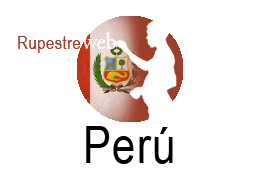






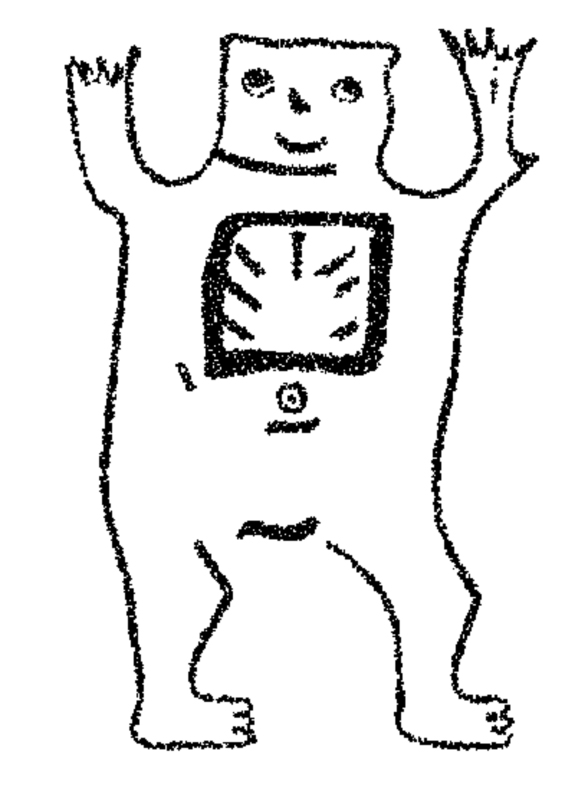
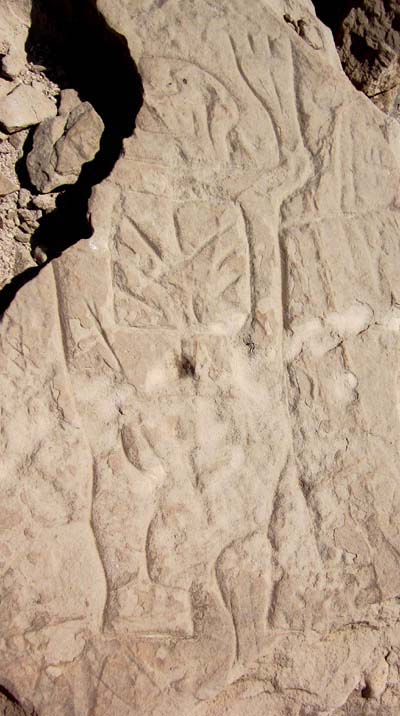
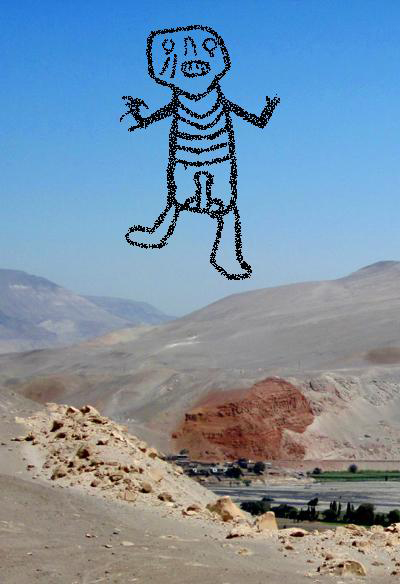
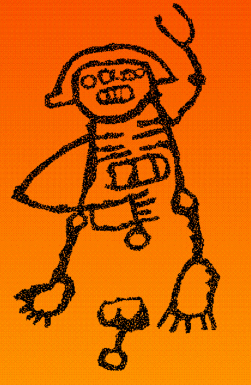
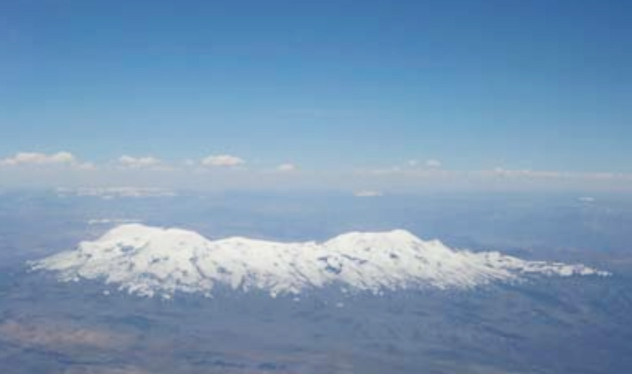
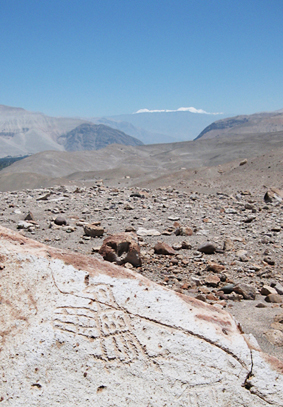
![]()
